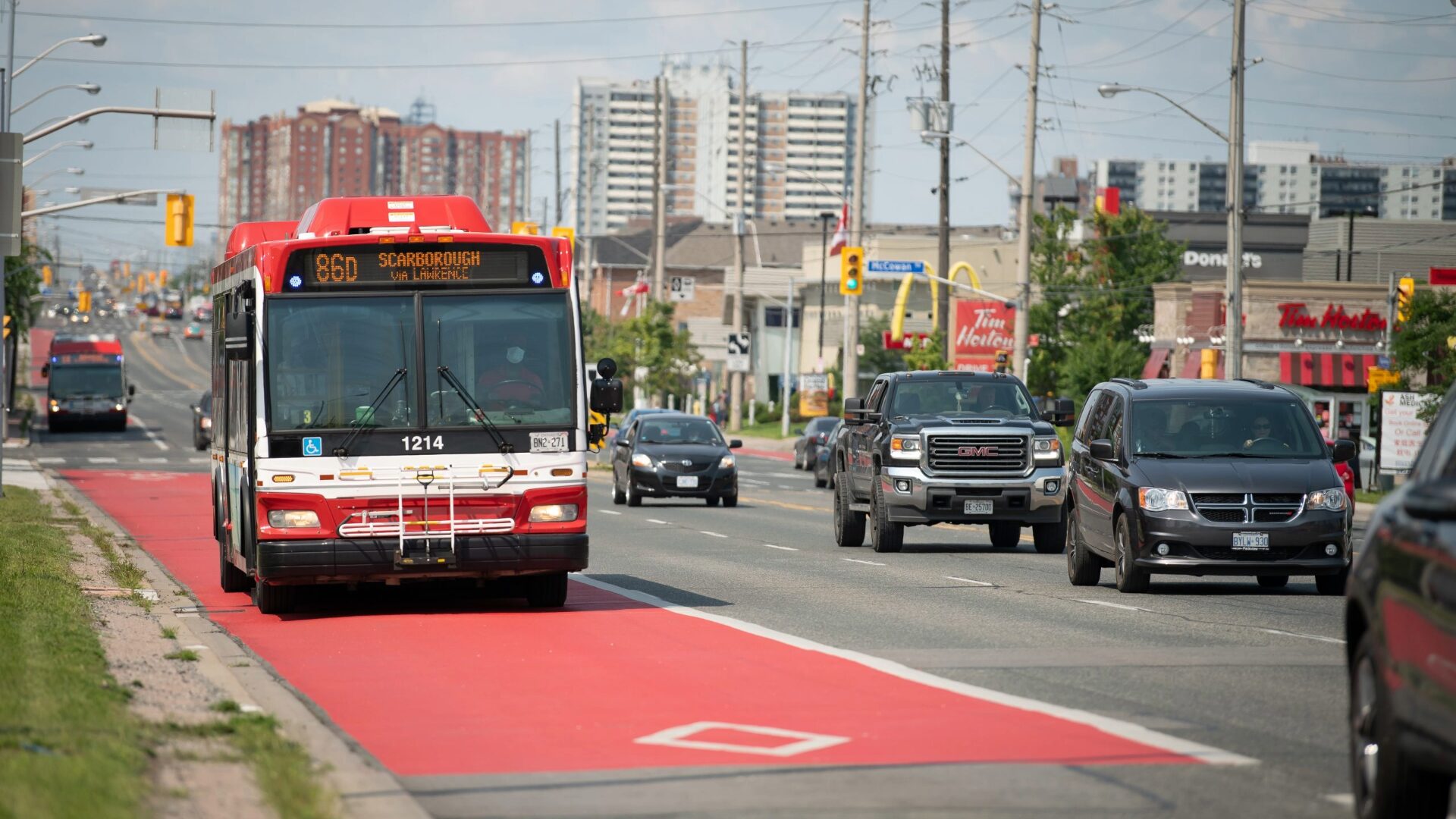In Meldazy v. Nassar, the Ontario Court of Appeal upheld a jury award of over $1.5 million in damages to a man injured in a low-impact collision with a TTC bus in 2016. On appeal, the defendants challenged the trial judge’s refusal to put their proposed questions on causation and apportionment to the jury and her discussion of the evidence and instructions on past income loss in her jury charge. Finding no error in the trial judge’s exercise of discretion, the Court dismissed the appeal in its entirety.
The respondent was successfully represented on appeal by Partner Christopher Morrison and myself.
Background
On January 18, 2016, the plaintiff (respondent) was stopped in traffic when his pickup truck was rear-ended by a TTC bus. He claimed that the accident caused neck and back injuries, chronic pain, psychological injuries, and a reduced capacity to work.
Following the TTC accident, the respondent was involved in two subsequent motor vehicle collisions but maintained that these later incidents only temporarily aggravated the injuries caused by the TTC accident. The defendants (appellants) argued they played a significant role in his ongoing condition.
At the start of the five-week jury trial, the appellants admitted negligence and liability, leaving the jury to determine the amount of damages attributable to the TTC accident. The jury awarded damages totalling over $1.5 million, broken down as follows:
- General non-pecuniary, pain and suffering, loss of enjoyment: $157,000.
- Past income loss: $90,000.
- Past medical expenses: $82,457.
- Future income loss and loss of earning capacity: $725,000.
- Future care costs: $460,000.
- Future housekeeping/home maintenance: $100,000.
The Appeal
The appellants sought a new trial or to set aside the past income loss award, advancing four grounds:
- The trial judge erred by not putting their proposed causation question to the jury.
The question put to the jury was: In what amount do you assess the damages of the plaintiff arising from the motor vehicle collision on January 18th, 2016?
They argued that the jury should have been asked directly whether the TTC accident caused the plaintiff’s injuries, particularly given their biomechanical expert’s evidence that the low-speed (8 km/h) impact was too minor to cause such injuries.
- The trial judge erred by not allowing their proposed jury question on apportioning damages.
At trial and on appeal, the appellants conceded that apportionment of damages could be properly addressed through jury instructions but maintained that the preferable method was through specific jury questions that.
The trial judge declined to put their proposed series of questions to the jury because they were overly complicated, flawed, and presumed that the plaintiff had suffered divisible injuries. The appellants argued that their questions were consistent with the approach upheld in Hicks v Cooper, and that the jury instructions were insufficient.
- The trial judge failed to summarize evidence in the jury charge relevant to the plaintiff’s credibility.
The appellants argued that the trial judge’s summary omitted a key statement proposed by the defence that affected the plaintiff’s credibility, and that this omission undermined their theory of the case.
- The trial judge failed to instruct the jury to disregard the plaintiff’s expert’s evidence on past income loss.
The plaintiff’s economic loss expert calculated past income loss by using statistical evidence of similarly situated individuals. They argued that the theory used reflected a company loss rather than the plaintiff’s personal loss because it was based on the cost of a replacement worker.
Despite having the expert’s report prior to trial and making no objection to the evidence at trial, they argued that the jury should have been told to disregard it.
The ONCA Decision
Justice Simmons, writing for a unanimous panel, dismissed each ground of appeal.
Causation
The Court was satisfied that the combined effect of the question put to the jury and the trial judge’s clear “but for’ causation instructions was sufficient for the jury to understand the assessment they were required to make. The trial judge’s decision was aligned with the principle that civil jury questions and jury instructions “are intended to work hand in glove”.
Notably, trial counsel did not object to the jury charge on this issue nor did they allege on appeal that there was any error in the instructions.
Apportionment
The Court was satisfied with the trial judge’s discretion to reject the defendants’ complex, flawed questions that assumed divisible injuries and which deviated from the Hicks model. She properly addressed the issue by adopting the less complex question proposed by the plaintiff and providing proper jury instructions.
The appellants did not object at trial to the instructions they challenged on this appeal, and in fact, expressly abandoned this ground of appeal in their appellate factum. Nonetheless, the appellants made oral submissions on the point, leaving the respondent unprepared to comprehensively respond. The Court held that the jury instruction issue was “best left to another day when they can be properly raised and fully argued.”
Summary of Evidence
The Court found that the trial judge properly addressed the appellants’ concern when she warned the jury that her summary was not exhaustive, that they should rely on their own recollection, and that credibility was for them to decide. It was trial counsel’s decision to not include this evidence in their statement of the defence position that was included in the jury charge. Nonetheless, they expressly summarized the evidence at issue in their closing address.
Expert Evidence
The Court held that the trial judge properly exercised her gatekeeper function in relation to the expert evidence, and reaffirmed the high standard required to vary the amount of past income loss awarded by the jury. The trial judge correctly identified that the evidence was not premised on a replacement worker being hired but rather on valuing the extent to which the respondent’s earning capacity had been diminished based on the cost of the work he claimed he was unable to perform.
The alleged flaws in the evidence raised by the appellants went largely to weight rather than its admissibility. The appellants did not demonstrate that it was “so plainly unreasonable and unjust as to satisfy the court that no jury reviewing the evidence as a whole and acting judicially could have reached it”. It was open to the jury to award $90,000 for past income loss as it was supported by other evidence the plaintiff adduced at trial.
Conclusion
This case provides key reminders for trial counsel:
- Jury questions must be clear and neutral; overly convoluted questions are likely to be rejected.
- Jury instructions “work hand in glove” with jury questions and must be considered as a whole.
- Be proactive with objections.
- Objections to expert evidence, expert methodology, jury questions or instructions, must be raised at trial, not on appeal.
- Don’t expect the trial judge to repeat your narrative of the case. Use closing arguments strategically.
Ultimately, Meldazy v Nassar serves as a reminder that appeals are not a second trial. A successful appeal requires showing an actual error in fact or law, not simply dissatisfaction with the result.





